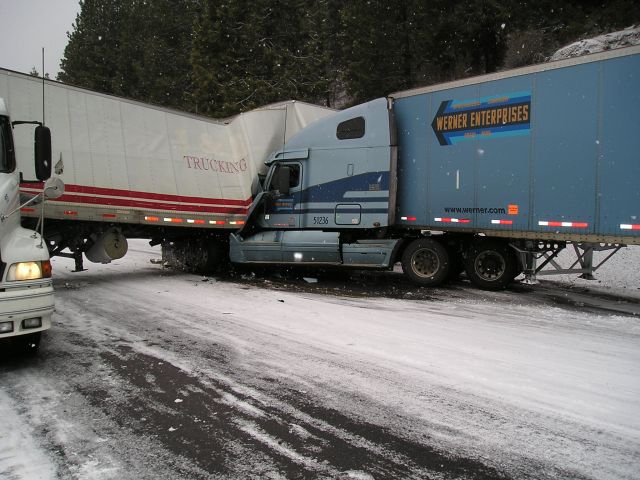 Let’s face it: a lot of drivers in Virginia (VA) are fairly challenged when driving in ice and snow because it doesn’t happen much in many areas in the Commonwealth (okay, those of you in the western part of the state and some of the Blue Ridge Mountain areas are an exception to this statement).
Let’s face it: a lot of drivers in Virginia (VA) are fairly challenged when driving in ice and snow because it doesn’t happen much in many areas in the Commonwealth (okay, those of you in the western part of the state and some of the Blue Ridge Mountain areas are an exception to this statement).
When Virginia (VA) drivers are faced with black ice, many of them have never faced the conditions before and this can result in a motor vehicle accident with a serious injury like a traumatic brain injury, or even death. Many of us in Virginia (VA) only face icy roads a couple times each winter and if you are a southern driver who has not experienced these conditions, you may have a difficult time. I can tell you, from personal experience (I’ve lived in Colorado and am an avid skier), driving in wintery weather is a tough challenge.
Some drivers who have never experienced ice or snow really don’t understand how to crawl up to a stop sign. I’ve seen obviously inexperienced winter drivers simply smash on their brakes as they get near a stop sign and roll all the way through an intersection that’s covered with black ice, barely escaping a serious accident like a t-bone crash and life-altering injury like a broken neck or facial disfigurement.
LEARN MORE
- Explaining the Contributory Negligence Rule in North Carolina
- What Is Negligence in a North Carolina Car Accident?
- Can Winter Weather Relieve Liability for At-Fault Drivers in Personal Injury Cases?
As many articles state, the safest place to be during icy conditions is inside your house, not a car. However, there are occasions where you or others may be traveling and the conditions arise suddenly. Even if you pull over to the side of the road in black ice conditions it is a bad idea to stay inside the vehicle if it is on the shoulder anywhere in the zone of danger.
Therefore, here are some tips on how to successfully drive on icy and snowy roads:
- Allow at least three times more space than usual between you and the car in front of you.
- Brake gently to avoid skidding. If your wheels start to lock up, ease off the brake, and then lightly begin braking until you feel traction.
- Turn on your lights to increase your visibility to other motor vehicles.
- Keep your lights and windshield clean.
- Use low gears to keep traction, especially on hills.
- Don’t use cruise control or overdrive on icy roads.
- Be careful on bridges, overpasses and infrequently traveled roads, which will freeze first. Even at temperatures above freezing, if the conditions are wet, you might encounter ice in shady areas or on exposed roadways like bridges.
- Don’t pass snow plows and sanding trucks unless absolutely necessary. The drivers have limited visibility, and you’re likely to find the road in front of them worse than the road behind.
- Don’t assume your vehicle can handle all conditions. Even four-wheel and front-wheel drive vehicles can encounter trouble on winter roads with black ice or icy and snowy conditions.
If you follow these suggestions, you’ll improve your chances of avoiding a major car wreck. Many of our personal injury clients, when they first call us about pursuing a lawsuit against another driver due to an icy or snowy car accident and their personal injuries, ask right away, “Can the other driver assert its an ‘act of god’ or just ‘nature’?” The answer depends on the circumstances involved.
All drivers must be careful to keep a safe distance from other cars, and this means not following too closely behind the car ahead–especially in ice and snow. Bad driving conditions mean that the “other driver” must drive below the posted speed limit. So, each case has its own special facts. And, commercial truck drivers have special statutory duties when operating in ice and snow which places a higher duty on them also.